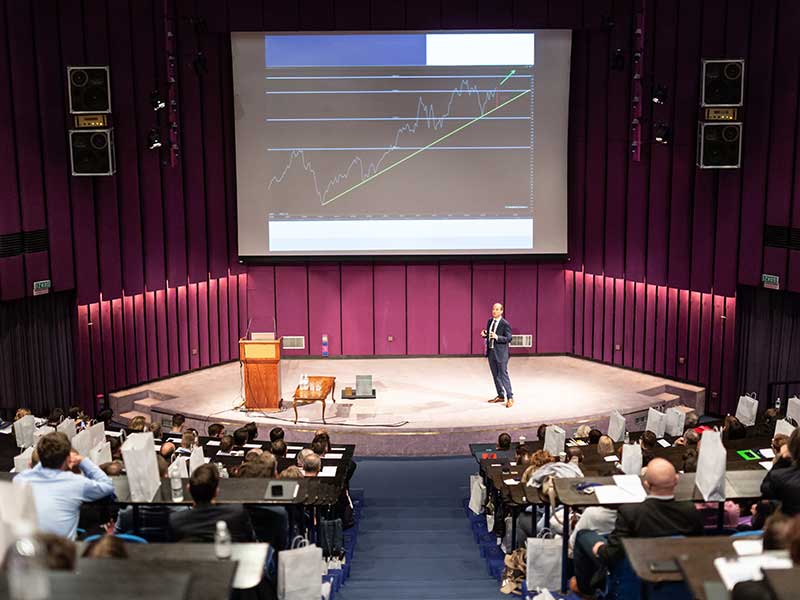
PR Event Planning: What You Need To Know
Published
In the dynamic landscape of public relations, one question that often arises is, “what is PR event management?” Essentially, PR events are orchestrated activities tailored to build and enhance a brand or individual’s public image. These events, when executed effectively, have the power to shape public perception, create lasting impressions, and drive engagement. Let us delve into the intricacies of PR event planning and the considerations you should be aware of.
Understanding the Essence of PR Events
PR events are different from traditional events. They are not just about entertainment or information dissemination; they are strategic tools designed to convey a specific message, be it launching a product, handling a crisis, or celebrating a milestone.
Importance of Technology: In today’s digital age, the success of a PR event is often intertwined with technology. Utilizing specialized apps like enterprise event apps can be a game-changer. These apps offer features that facilitate better interaction, real-time feedback, and enhanced attendee experience.
Setting Clear Objectives
Before diving into the planning process, it is crucial to have a clear understanding of what you aim to achieve. Are you introducing a new product? Addressing a controversy? Or strengthening brand identity?
Each objective demands a unique approach. For instance, a product launch might require high-profile attendees and media presence, while a crisis management event might need a more controlled environment with selected stakeholders.
Audience Identification and Targeting
Every PR event has a target audience. It might be journalists, bloggers, industry experts, or even the general public. Identifying and understanding this audience is paramount.
Once the audience is defined, tailor the event’s content, format, and promotional activities to cater to their preferences. If your audience primarily consists of students or academicians, integrating functionalities from university apps can enhance their event experience, offering familiar interfaces and tools.
Venue and Ambiance Setting
The choice of venue can make or break a PR event. It needs to align with the event’s theme, the brand’s image, and the comfort of attendees. A tech product launch might be best suited in an urban, modern setting, while an organic food product introduction might resonate better at a farm or natural setting.
Ambiance plays a significant role too. The decor, lighting, and even the aroma can set the mood. Ensuring the ambiance resonates with the event’s core message can enhance the attendees’ experience manifold.
Promotion and Media Management
A significant part of PR event planning is promotion. How will people know about the event? Effective promotion ensures not only high attendance but also builds pre-event buzz.
Promotion can be done through various channels – social media, email campaigns, partnerships, or traditional media. Remember, it is not about the volume but the relevance. Targeting the right audience with the right message is the key.
Media management is another crucial aspect. Decide in advance which media houses you want to invite, prepare press kits, and maybe even rehearse potential Q&A sessions. Managing the media effectively can control the narrative and ensure the message is conveyed as intended.
Feedback and Post-Event Analysis
While the event’s execution is crucial, what happens after is equally important. Gathering feedback, analyzing what went well and what did not, can provide valuable insights for future events.
Tools integrated within event apps can facilitate this. Attendees can quickly provide feedback, participate in surveys, or even engage in post-event discussions. Such engagement not only provides data but also ensures the attendees remain connected, enhancing brand loyalty.
Crisis Management: Being Prepared for the Unexpected
Despite meticulous planning, things can go awry. A technical glitch, an unexpected question from a journalist, or even external factors like weather can disrupt an event. Being prepared for such unforeseen circumstances is essential.
Have a backup for everything – from microphones to presentation slides. Prepare your speakers for potential challenging questions. And always have a crisis communication plan in place. It ensures that even if things do not go as planned, the brand’s image remains intact.
Leveraging Digital Platforms
In today’s digital era, the scope of a PR event is not limited to the physical attendees. Live streaming, social media updates, and digital interactions mean that an event can have a global audience.
Leveraging this can amplify the event’s impact. Use digital platforms not just as broadcasting tools, but also as engagement tools. Live polls, Q&A sessions, and real-time feedback can make remote attendees feel as involved as the ones physically present.
PR event planning is a strategic endeavor that demands meticulous planning, understanding of the audience, effective promotion, and the ability to manage crises. By integrating the right tools, especially specialized event apps, and understanding the core objectives, brands can ensure their PR events leave a lasting positive impression. And remember, in the world of public relations, it is not just about the event, but the narrative it creates.


